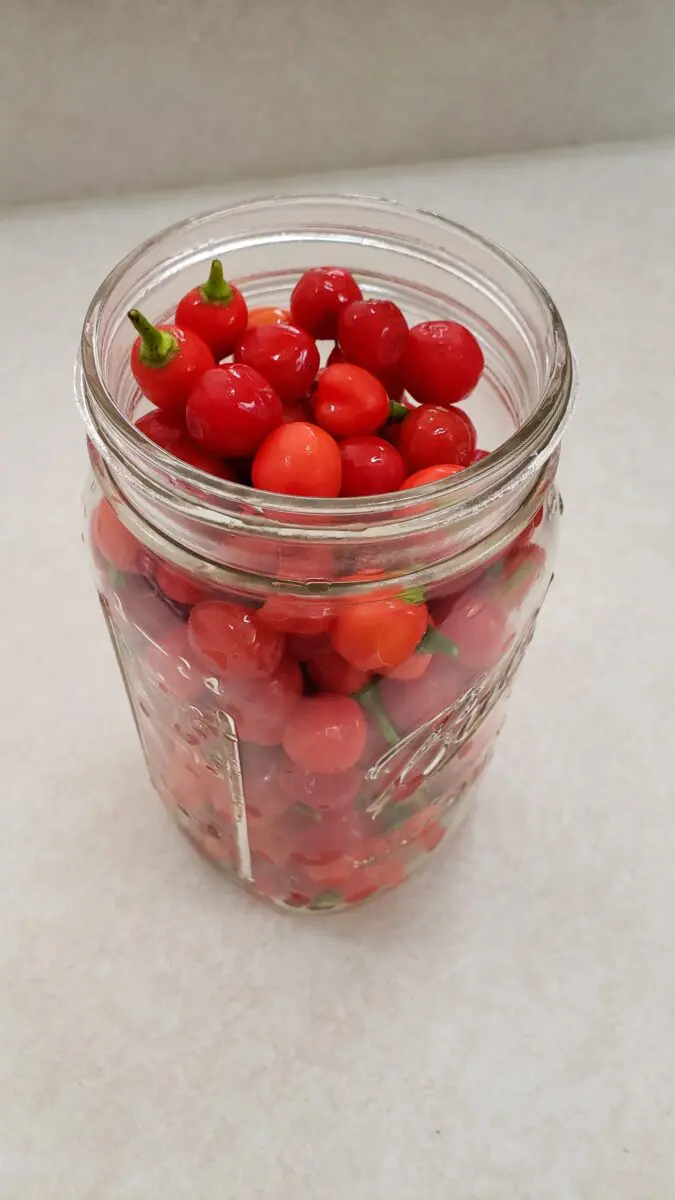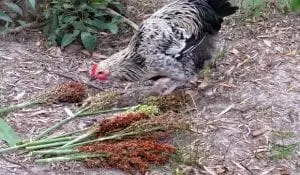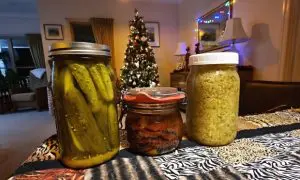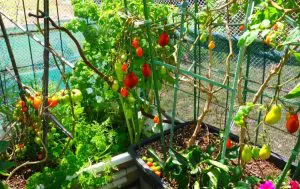
Hot sauce truly fires me up! They provide the spice of life we sometimes need. My children are still young and don’t yet appreciate hot sauce, but they always ask me, “Daddy, why do you put hot sauce on everything?” I answer “Because hot sauce makes things exciting!”
I really can’t describe it any other way. Hot sauce is exciting. It is life itself.
There are many kinds of hot sauces; vinegar-based, cooked, pickled, fermented, and fresh. Some are strained and bottled as a fluid, while others are blended and pulpy. Better still, some styles of hot sauces can be combined. Really, the style of sauce is up to you and your preferences.
Today, I will be showing you how to produce a vinegar-based fermented hot sauce. You’ll find that most hot sauces on supermarket shelves are vinegar-based, and so this is what most people are accustomed to consuming. I will be kicking it up a notch with this version by fermenting it as well.
Fun Fact! I recently discovered that a very popular international brand produces their hot sauce by first aging with salt the pulp of the pepper in used bourbon barrels for up to 3 years. This fermentation process takes advantage of lactobacillus bacteria, the same bacteria that is responsible for lovely foods such as sourdough bread, sour beer, vinegar, and pickles. After fermentation, the pulp is combined with vinegar and continuously blended for 2 weeks, then finally strained and bottled.






PRO TIP: Be sure to have ventilation if you are blending this mixture indoors!

PRO TIP: do not discard the pulp you strain! Save this and use it in cooking or other dishes you want to spice up! Make sure to keep this pulp in the refrigerator.





Equipment list:
- Wide mouth mason jar
- Fermentation glass weights
- Wide mouth fermentation lids with airlocks
- 2 Litre glass canning jar
- (2) stainless steel pots
- Food scale
- Food thermometer
- Blender
- Food processor
- Immersion blender
- Bottles/lids for the finished hot sauce

Vinegar-Based Fermented Hot Chilli Pepper Sauce
Equipment
- 1 mason jar wide mouth type
- 1 fermentation glass weight
- 1 fermetation lid with airlock wide mouth, to fit the mason jar
- 1 2 litre glass canning jar
- 2 stainless steel pots large
- food scale
- food thermometer
- Blender
- food processor
- stick blender a.k.a. immersion blender
- 6 bottles for the finished product
Ingredients
- 400 grams chillies (hot peppers) choose the heat level you prefer- any variety can be used
- 80 grams kosher salt cooking salt can be substituted, but the amount will change due to the difference in density
- 670 millilitres white vinegar
Instructions
- Pulse chillies & salt in a food processor and pulse until roughly chopped. Don't chop too finely or the fermentation weight will not be able to hold the pulp down.
- Put the puree into a mason jar & put a fermentation weight on top. Make sure all the pulp is submerged.
- Cap with a fermentation lid & airlock if your jar requires it. Set aside for 30 days in a cool dark place. Check it occasionally for any signs of contamination. It is normal to see bubbling & the airlock will move.
- Add vinegar to contents & transfer to a large airtight jar. Set aside for a further 30 days & shake daily. The acidity from the vinegar & agitation will assist with breaking down the pulp, providing more depth & flavour to your hot sauce. Optional- use a stick blender to puree the contents for 60 seconds instead of shaking.
- Blend mixture in a blender for 5 minutes.
- Strain contents into a large pot using a fine-mesh sieve.
- Heat the pot of sauce to 93 degrees (200F). Monitor with a thermometer. This will pasteurise the sauce without boiling it.
- Fill a separate large pot 3/4 full of water. Heat to 74 degrees (165F) then place the empty glass sauce bottles & lids in it. Maintain this temperature & leave them in for 5 minutes to sterilise.
- Remove sanitised bottles & lids from the water & fill with hot sauce. Quickly cap them then allow to cool to room temperature. If using mason or other jars with pressure-sealing lids, return them to the hot water for a further 5 minutes. Maintain a water temperature of 165F or 74C for the full 5 minutes.
- Allow the bottles to cool to room temperature before applying a heat-shrink wrap.
Notes
- Salt = 0.20 x total weight of peppers in g/oz, kosher salt is preferred
- Distilled white vinegar = 1.666 x total weight of peppers in g/oz












